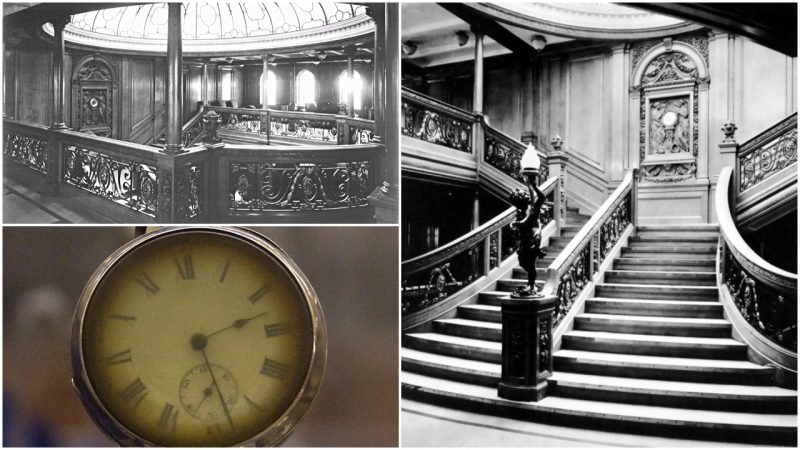Imagine how the RMS Titanic must have looked in all her glory and beauty.
Her boat deck level of the stairwell formed an interior balcony, which overlooked the staircase and A-deck below. There were two entry foyers on either side of the boat deck, connecting the section with the outer parts of the ship.
A gymnasium entrance was to be found right next to the marvelous starboard Grand Staircase entrance. Then there were the officer’s quarters and the Marconi Room, both accessible through two corridors that spanned from both sides of the staircase. Beautifully lined arched windows that allowed light to penetrate the stairwell during the daytime encompassed the area.
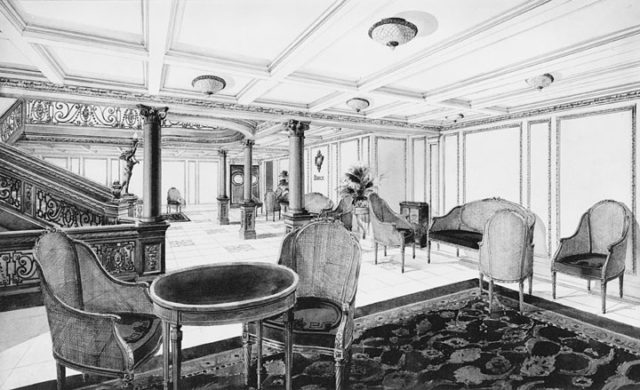
Off from the A-deck level, guests were able to move to the ship’s reading and writing rooms, or enjoy their leisure time in the lounge area. Other entrances on A-deck led to the promenade deck, and toward A-deck’s first-class staterooms. A framed map of the North Atlantic route, which showed how the Titanic traveled across the ocean, stood on a wall in this section too, and was updated each day at noon.
Not all decks had public rooms at their disposal. E-deck, for example, only contained first-class cabins. B-deck, too, was mainly first-class cabins; in fact, here were some of the finest cabins available.
On C-deck, the guests were able to make inquiries at a special Pursers and Enquiry Offices. They could also purchase small souvenirs like a postcard, or buy a ticket for the Turkish baths, which were located on one of the lower decks. To fill in their free time, passengers were also able to check out various board games or arrange their seating in the dining saloon. The Reception Room and adjacent Dining Salon were both to be found on D-deck.
Indeed, life onboard the lavish ocean liner must have been truly relaxing, until the ill-fated moment of disaster struck.
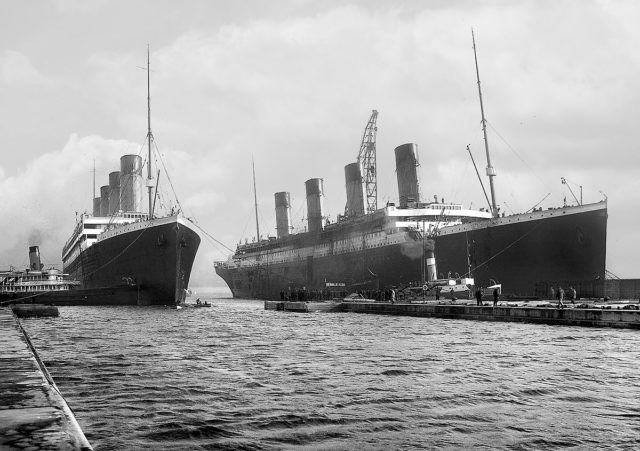
Perhaps what best caught the eye, and what is considered to be one of the most memorable sights of the entire interior of the RMS Titanic, was the Grand Staircase. Located in the forward part of the vessel, the Grand Staircase was like the heart of the ship. Descending seven levels, between boat deck and E-deck, this feature brought together all first-class passengers and offered a point of entry to a number of public rooms on the ship. Three additional first-class elevators just forward of the staircase tied A-deck and E-deck too.
There was one more Grand Staircase, built in between the third and the fourth funnel of the ship. Despite it being done in the same manner, with a dome at the center, it was much smaller and connected three decks only.
The forward Grand Staircase is probably the best example of workmanship in the area of the first-class public rooms and has been acknowledged as one of the most recognized interior features of the ill-fated ocean liner.
Unfortunately, there are no known photographs of the Titanic‘s staircase, but many survive of the Olympic‘s, which is presumed to have been similar. The iconic photos many have probably seen depicting the authentic staircase indeed belong to Titanic‘s sister ship. The appearance of the staircase in the 1997 movie about Titanic is also based on those very same photos from the Olympic.
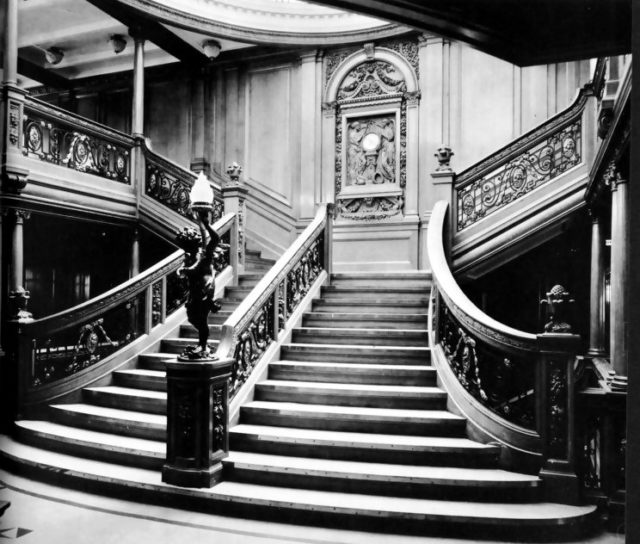
During daytime, the two-story-high A-deck was designed in a way that enabled natural light to enter the stairwell. At night, in the center of the dome, a large crystal and gilt chandelier, set off the lavishness of the section. The light was enriched by smaller beaded crystal chandeliers fixtures, too. Some of them have been located on the wreck in the forward parts of the A-deck and boat deck sections.
The staircase was made of thick English oak. Each banister further incorporated intriguing wrought-iron grilles plus ormolu swags in the Louis XIV style. The same polished oak dominated the surrounding entrance halls, produced with excellent workmanship in a Neoclassical William & Mary style.
White linoleum tiles with black medallions were laid in harmony on the floors, while comfortable armchairs and sofas situated just off the staircases enhanced the luxurious comfort of the area. Potted palms placed in raised holders were all over the levels, and on the boat deck, any musicians onboard were most welcome to improvise on a piano.
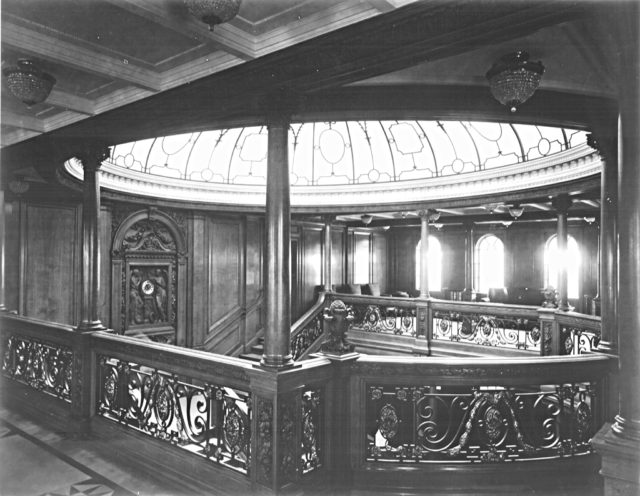
Flanked by two carefully carved allegorical figures, and under the spotlight of the central landing on A-deck staircase, there was the famous Titanic clock. The two figures embracing the clock stood symbolically as “Honour and Glory Crowning Time.” Still-life oil paintings occupied the exact same position on the other levels.
At the base of the staircase here at A-deck, there was also a bronze cherub sculpture that held an illuminated torch. Smaller replicas of the sculpture were most likely to be found at some of the other levels too. Down at D-deck, where the staircase opened toward the Reception Room, a heavy gilt candelabra with electric lighting added to the list of beautiful and lavish decor.
However, when the wreck of Titanic was found in 1985, thanks to the efforts of Robert Ballard and his team, the famous Grand Staircase was missing. There was only a gaping well in the place where the Grand Staircase had once been shining in all its splendor.
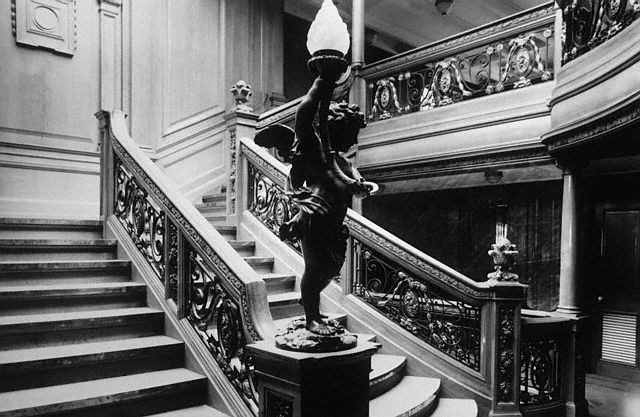
During the filming of the 1997 movie, directed by James Cameron, the Grand Staircase replica was torn out by the water when the set was flooded. The real staircase was most likely ripped out of the ship in a similar manner on the tragic night of the sinking.
As the staircase was entirely made out of wood, it is thought that it either broke apart and floated out of the stairwell during the sinking or disintegrated in the 73 long years before the wreck of the once-glorious ship was found. Another possibility is that whatever was left of the beautiful staircase, it collapsed under the force of the bow hitting the ocean bed. The surrounding foyers with their oak pillars, though, have all survived in fairly recognizable condition.
When this scene was re-created for the 1997 film, director Cameron noted that the staircase of the set broke free and then floated to the surface. He remarked that it may be exactly what happened with the Grand Staircase during the actual sinking.
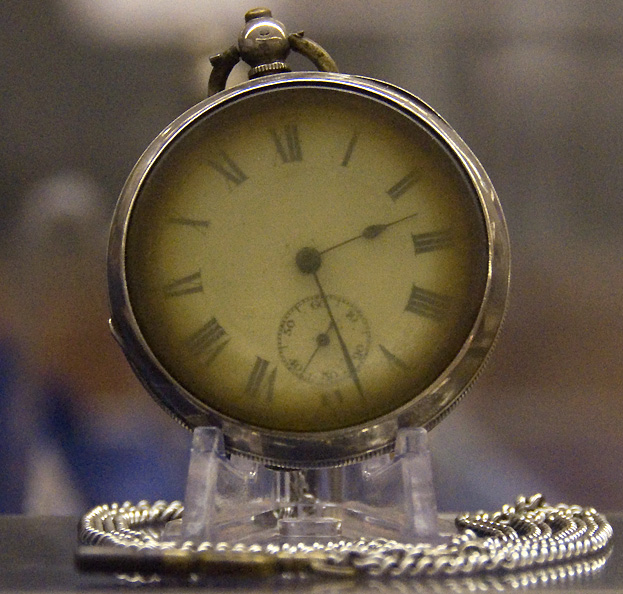
Some artifacts and memorabilia can be found in museums here and there. For example, the carved clock of the Olympic, considered to be identical to that of the Titanic, is preserved and exhibited at the SeaCity Museum in Southampton. The piece was used as a model for the one in Cameron’s film.
Some wreckage from the Titanic‘s aft and forward Grand Staircases, recovered in the weeks following the sinking, can also be seen at the Maritime Museum of the Atlantic in Halifax, Nova Scotia.Two bronze cherubs from the Titanic and the base of the forward A-deck cherub have also been recovered from the debris among other items.
